ONLINE NEWS: CLASH OF NARRATIVES, PART 1: IS LEMBAH BUJANG NOT AS OLD AS WE THINK IT IS?
Scoop
Clash of narratives, part 1: is Lembah Bujang not as old as we think it is?
By Maria J. Dass | 31 October 2023
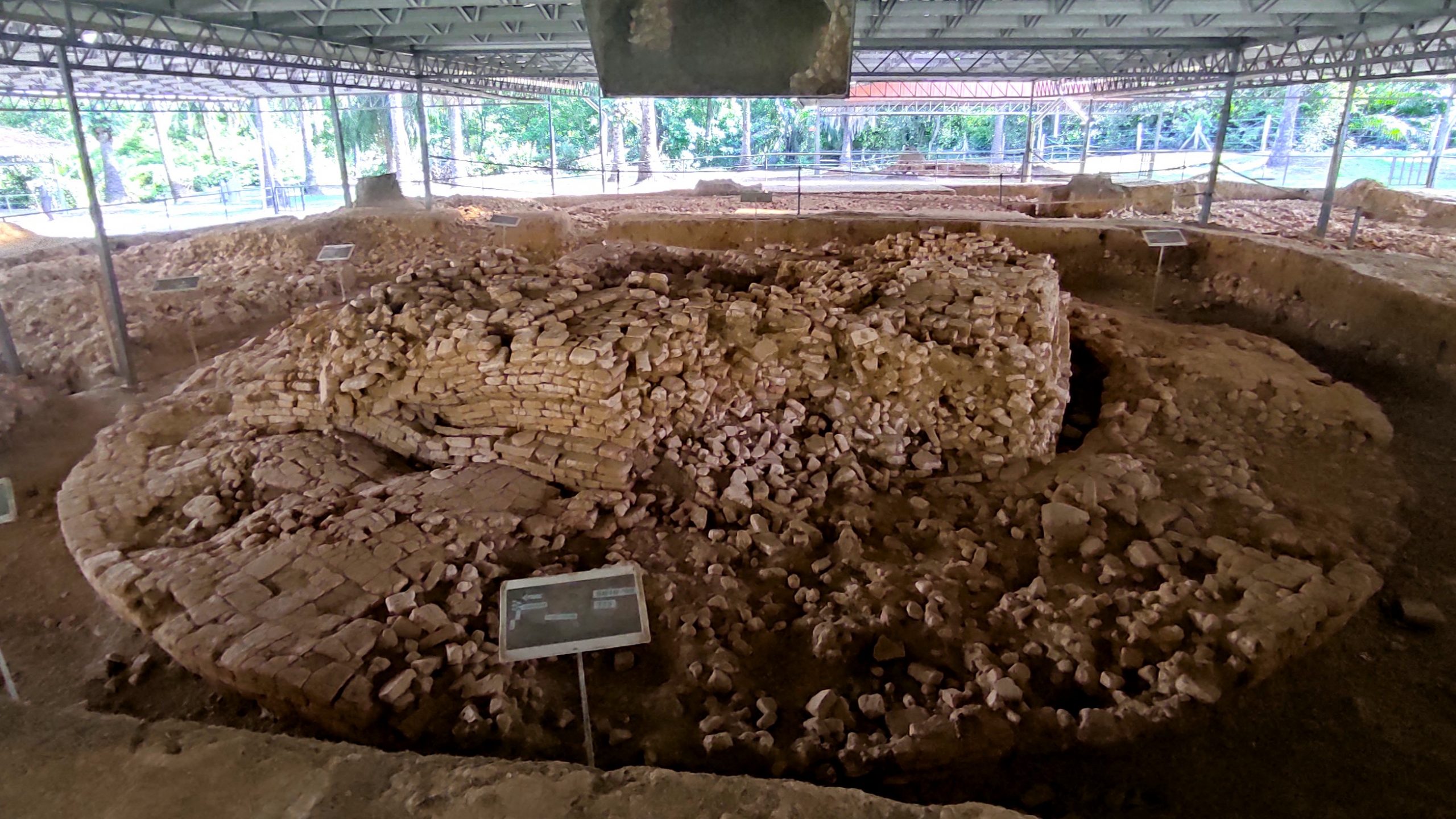
Archaeologists who conducted excavations at the Sg Batu site in 2009 have subsequently revised the period of existence from between 2nd and 10th century AD to 788 BC based on carbon dating on samples of coal and ash collected. – Maria J. Dass/Scoop pic, October 28, 2023
MERBOK – Is one of Malaysia’s oldest civilisations, Lembah Bujang, about 3,000 years old or 2,000?
Early archaeological discoveries in Lembah Bujang point to a civilisation that existed between the 2nd and 10th century AD. However, archaeologists who conducted excavations at the Sg Batu archaeological site in 2009 subsequently revised the period of existence to 788 BC based on carbon dating on samples of coal and ash collected on site.
This is also the narrative that comes up when one does an online search for “oldest civilisation in Southeast Asia”.
However, fellow archaeologists and experts in Southeast Asian history say that this claim has to be backed with credible “associate findings”, which include discoveries in the surrounding or neighbouring areas and regions.
Sg Batu is located within Lembah Bujang, which is part of the larger Ancient Kedah civilisation. To date, a total of 97 archaeological sites have been discovered in the valley, which lies at the foot of Gunung Jerai. From this, 54 sites have been excavated and the rest are pending archaeological digs.
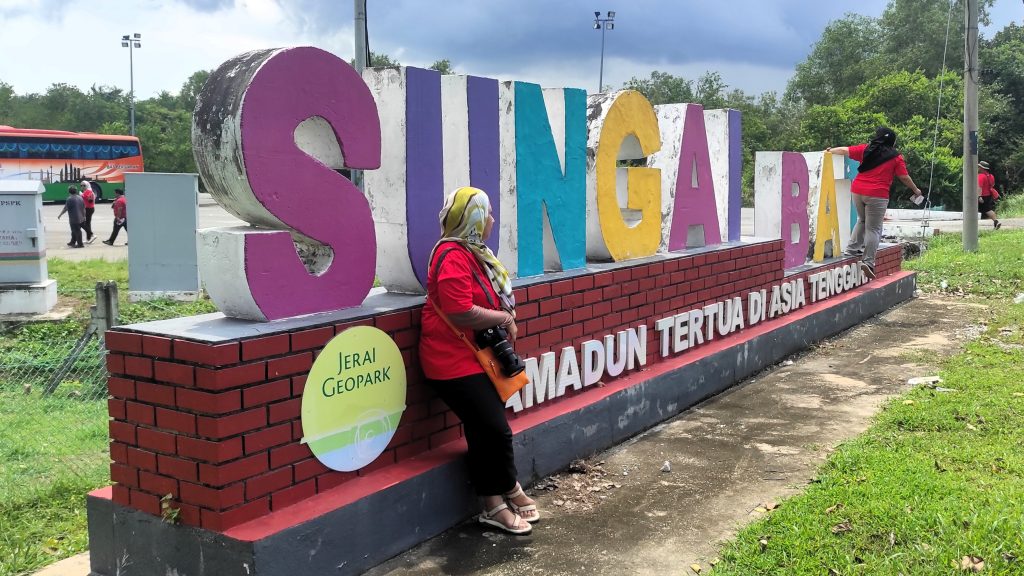
Signage outside Sg Batu saying that it is ‘the oldest civilisation in Southeast Asia. – Maria J. Dass/Scoop pic, October 28, 2023
Old and new narratives for Lembah Bujang
The 788 BC narrative for Lembah Bujang is propagated by now retired Universiti Sains Malaysia (USM) Centre for Global Archaeological Research (CGAR) Prof Datuk Mokhtar Saidin, whose efforts to map out Lembah Bujang since 2008 led to the discovery of a massive iron smelting industry, and the ancient port city of Sg Batu.
His narrative suggests that Sg Batu existed in 788 BC or likely even earlier based on ancient texts and carbon dating samples.
Going by this narrative, Ancient Kedah is the oldest civilisation in Southeast Asia, likely predating Borobudur in Java built between the 8th and 9th century AD, and Angkor Wat in Cambodia that was built in the early 12th century AD.
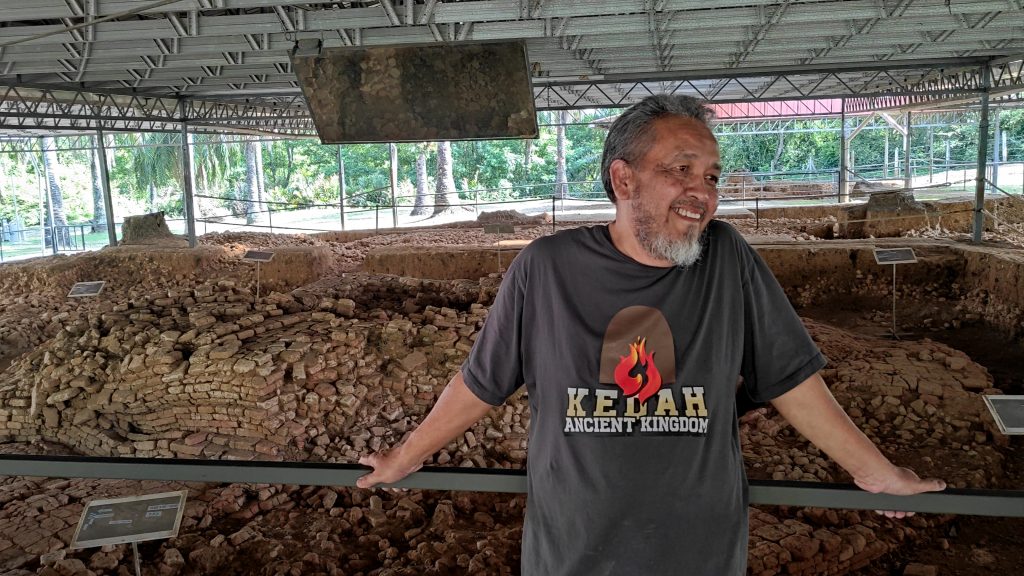
Prof Datuk Mokhtar Saidin stands in front of the Sg Batu Archaeological Complex. – Maria J. Dass/Scoop pic, October 28, 2023
However, more recent findings – based on the Bayesian Chronological Modelling online application, revise this dating and uphold the 2nd to 10th century AD timeframe. This application analysed radiocarbon data in Sg Batu via a two-dimensional model to produce a detailed analysis of the site.
Done in 2019 by one of Mokhtar’s students, now an archaeologist and senior lecturer at the USM CGAR Nasha Rodziadi Khaw, this analysis indicated that a majority of samples collected from the Sg Batu iron smelting site were dated between the 2nd and 10th century AD – consistent with the dating of tangible structures, and also written historical accounts for the site.
Khaw said although the dating negates the country’s claim to having the oldest civilisation in the region, all is not lost.
“The key lessons we can learn from Ancient Kedah is that it was a tolerant, diverse, inclusive and multicultural maritime civilisation,” he said.
This sets Ancient Kedah apart from other more monocultural civilisations in the region, and this is an excellent quality that fits the United Nations Educational, Scientific and Cultural Organisation’s (Unesco) Outstanding Universal Values, he said, adding that the National Heritage Department (JWN) is working on preparing a dossier to inscribe Lembah Bujang as World Heritage Site.
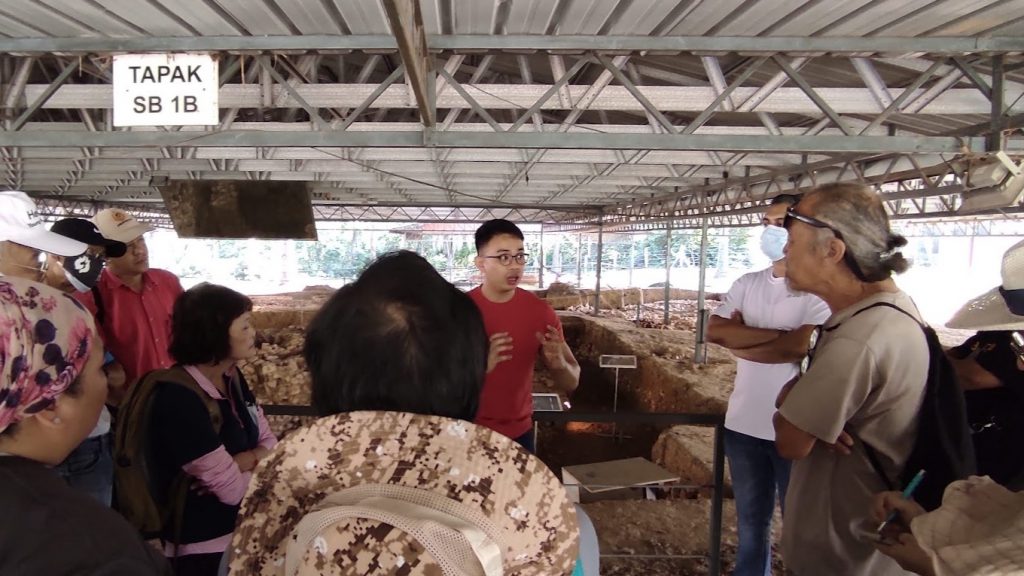
Archaelogist and senior lecturer Nasha Rodziadi Khaw showing visitors the Sg Batu site and explaining the findings about it. – Maria J. Dass/Scoop pic, October 28, 2023
Currently, both Mokhtar and Nasha are adamant about their narratives.
The differences between these two prominent academicians have spilled over into other areas – including the tourism industry, the media and on a larger scale the education sector.
So which narratives do we present to a wider audience including tourists, students and the general public?
In general, there are three types of historical narratives:
- the official narrative usually propagated by politics, administrators and the government of the day;
- the popular narrative, which is often the romanticised version that appeals to a wider audience; and
- the academic narrative based on data analysis, evidence, comparative studies, scrutiny and peer review of the subject.
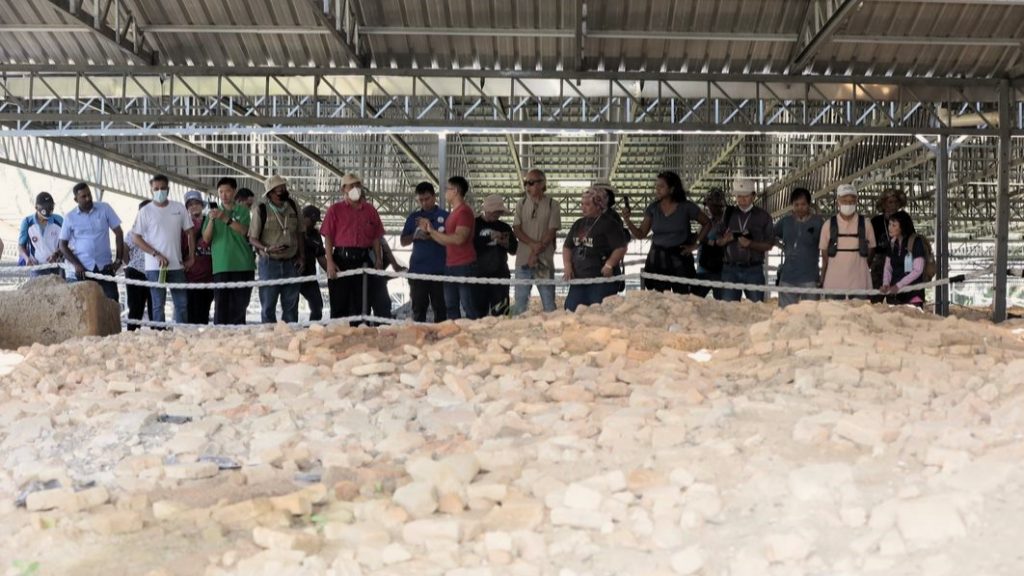
A site visit to the Sg Batu Archaeological Complex. – Maria J. Dass/Scoop pic, October 28, 2023
Government agencies like Tourism Malaysia will go with the official narrative – one that the JWN endorses.
In a written response to questions from Scoop on the department’s stand on the matter JWN Archaeology division director Zaharudin Abu said: “Historical narratives in the country are not static, they are by nature dynamic, and this includes the polemic involving Ancient Kedah.”
“Further research and more current findings may challenge existing theories and present alternative hypotheses.”
The department embraces pertinent and accurate research that is scientific in nature, proven by facts, and supported by findings – either via excavations or cross references with other sources, Zaharudin said.
He then added: “To date, the dating for Sg Batu officially endorsed by Universiti Sains Malaysia Global Archaeological Centre (PPAG USM), as presented by Dr Nasha Rodziadi Khaw is between the 2nd and 5th century AD.”
“This is however open to debate, discussion and further research in the future,” he said, adding that the JWN accepts the differences in opinion between Dr Nasha and Prof Mokhtar in a professional manner.
This polemic will only encourage more research on the Kingdom of Ancient Kedah and yield more data, in addition to boosting an interest in the field of archaeology in Malaysia, he said.
He added that the department is planning to organise a seminar that will involve global experts to discuss and debate on the Ancient Kedah dating polemic. – October 28, 2023
Clash of narratives, part 2: inclination for 2nd to 10th century AD Ancient Kedah
Lembah Bujang’s potential marred by poor interpretation, site management – part 3
- Created on .
- Hits: 152
